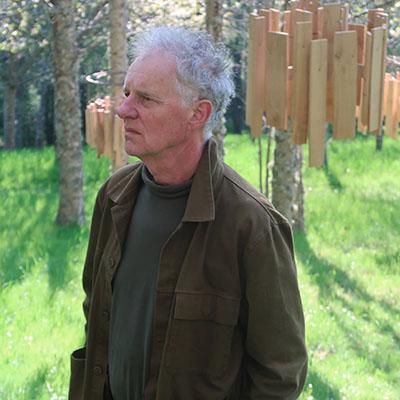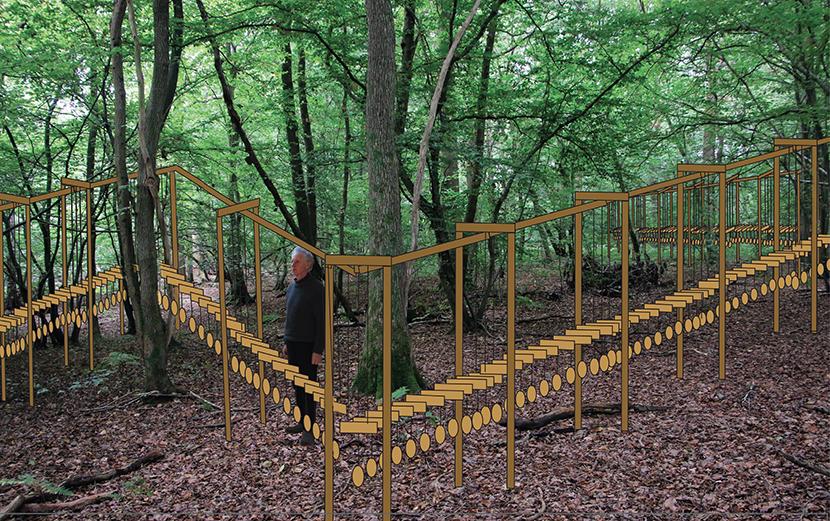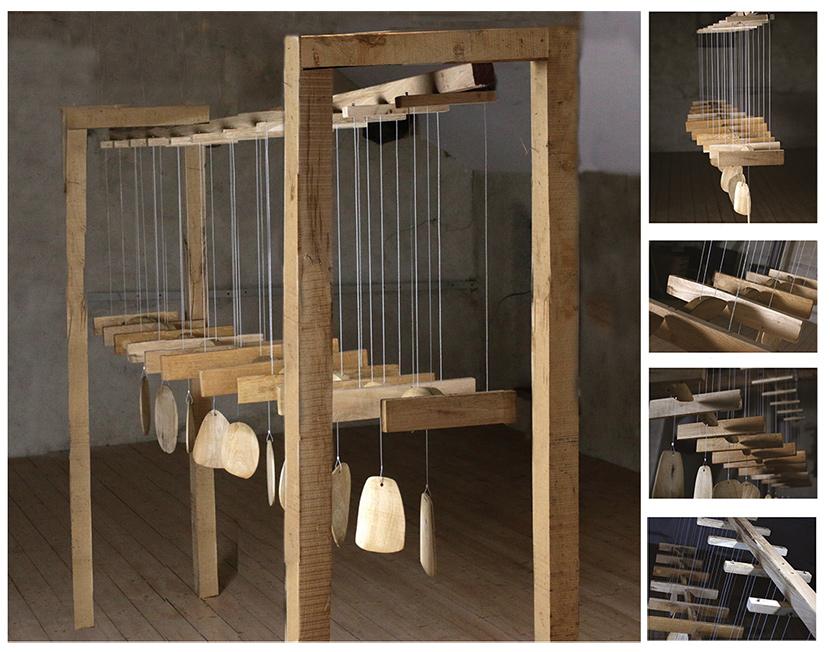
Since 1998, Will Menter, musician and visual artist, live in the French region of Bourgogne. He develops his sound sculpture work by focusing on the untransformed sounds of natural materials, especially wood, slate, stone and water, but also with more industrial materials such as steel and ceramics. Some of his works can be seen in the long term, for example, in Hoscheid, Luxembourg, around the lake of la Vouraie in Vendée, France and at Carrière de Vignemont in Loches.
He has collaborated with Erick Jimenez, dancer, and Jane Norbury, ceramist, on a series of multidisciplinary site-specific installations and performances at the Bibracte archaeological site and in Orense, Spain. Furthermore, we can also count his collaboration with the Résonance Contemporaine association, gave rise to his 40-minute composition, La Poésie de la Matière, performed at the Théâtre de Roanne in 2022, in which he mixes the sounds and movements of six sound sculptures with two female voices, two saxophones and six percussionists.


For many years, the musician and visual artist Will Menter has been orchestrating matter by creating sound sculptures that explore the boundary between music and natural sounds. In Une Rivière Sonore du Possible (One Possible Sound River), he uses simple sounds produced by colliding planks of oak to create gentle music in harmony with the forest. Based on the principle of the African xylophone and marimba, the artist has tuned each plank precisely by cutting a groove in its centre. The oak planks are placed side by side, each piece suspended laterally by two wires connected to a wooden structure that meanders through the forest.
The wood moves and vibrates freely. Between each plank, a hull-shaped piece of wood is used to strike the musical keys. This is in turn connected to a thin leafshaped piece that catches the wind.
The movements of the planks, whether caused by the wind or by the actions of the visitors, are totally random. The rhythms and melodies produced are therefore just as random and, as well as providing sensory pleasure, encourage us to reflect on the question of where music ends and nature begins.
